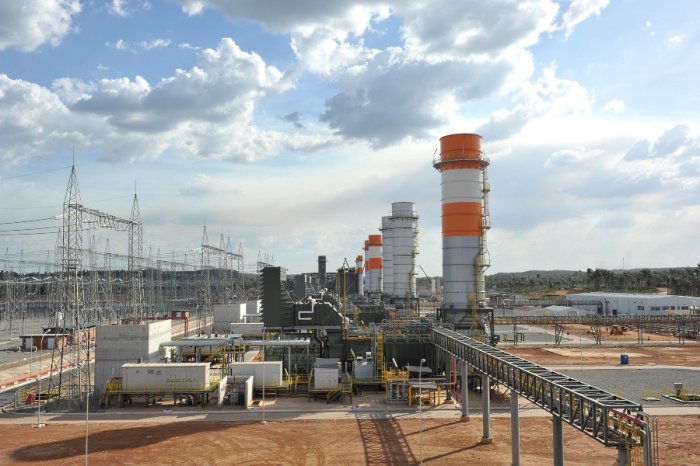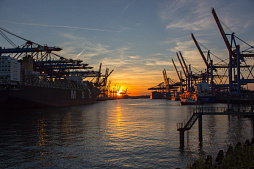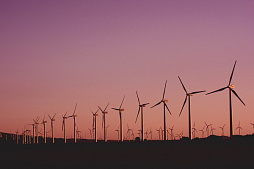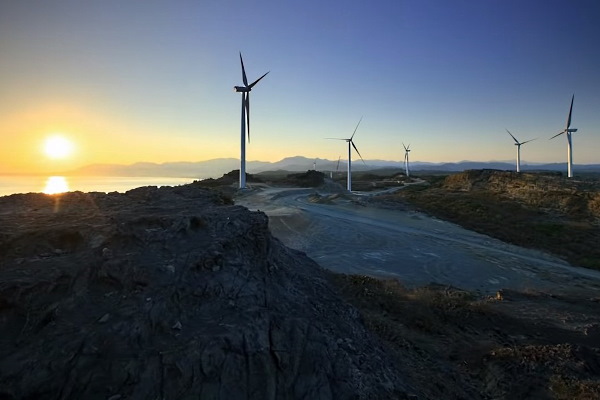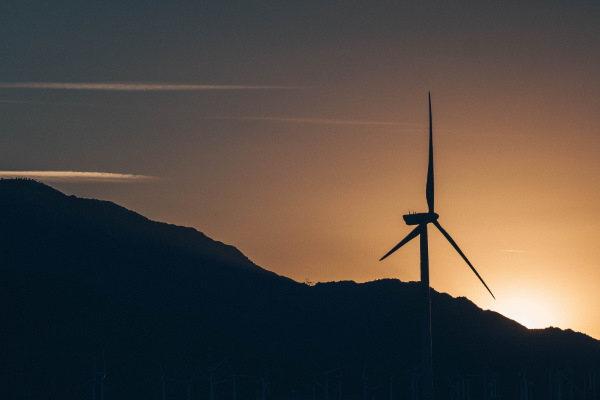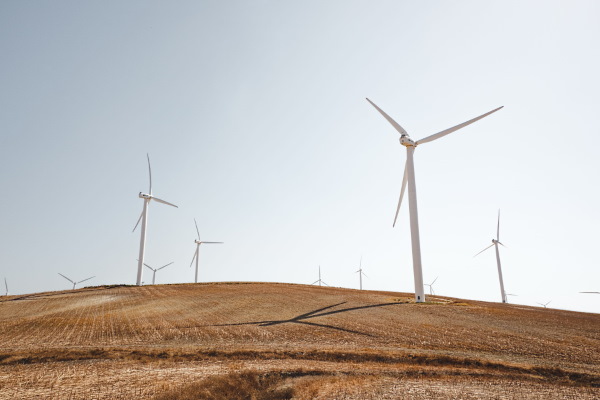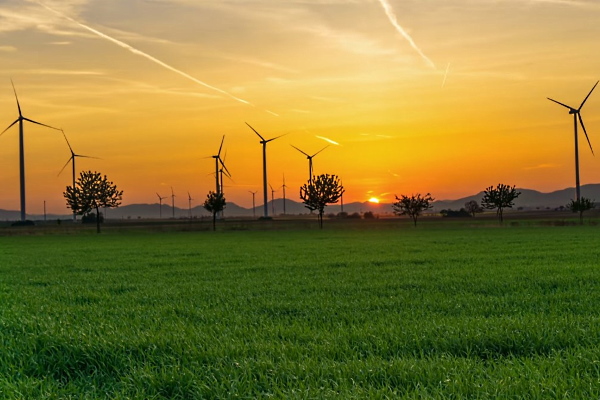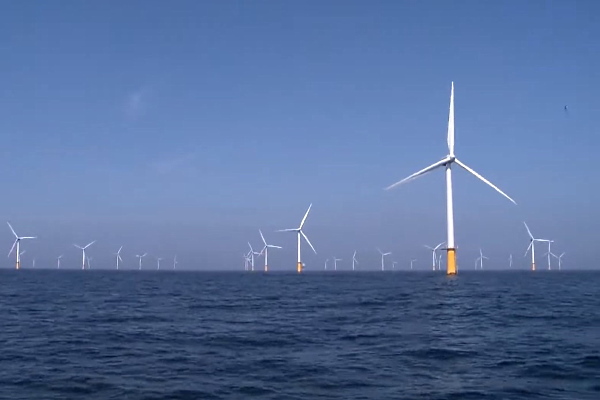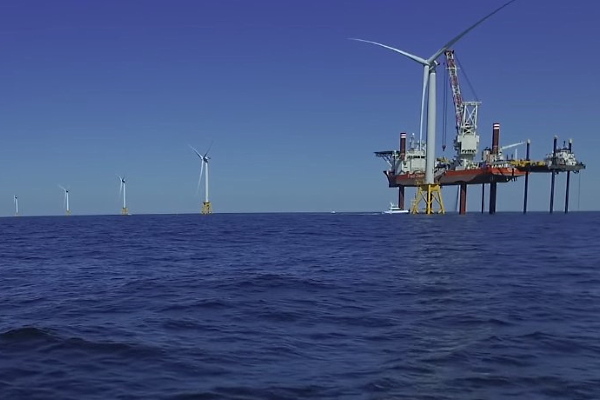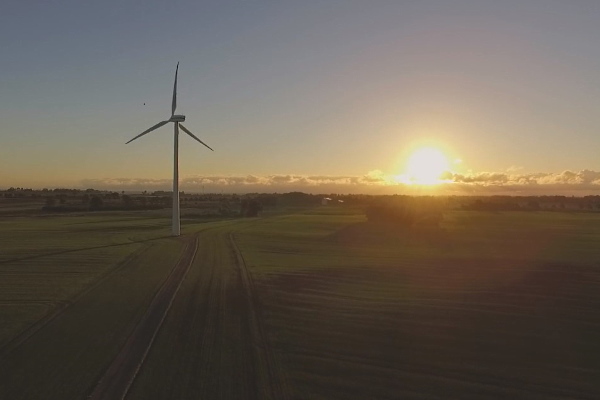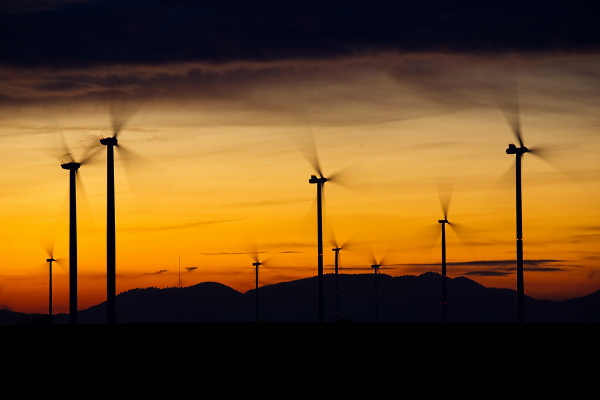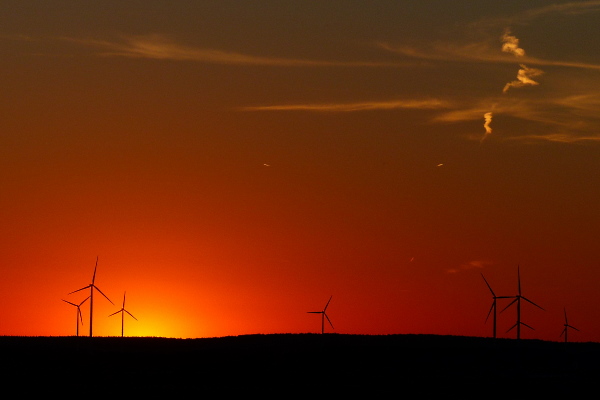To consider an application for financing, fill out the form and send it to us by e-mail along with the project brief, or contact our experts
Well-known financial institutions such as BBVA, Santander and CaixaBank provide long-term loans and other forms of financing for wind energy projects throughout Spain, being confident in the bright future of this business.
According to the International Renewable Energy Agency, the levelized cost of onshore wind energy reached €37/MWh in 2020, which is 60% less than 10 years ago. In the case of offshore wind, the LCOE reduction was almost 50% to €73/Mwh.
This is especially important in light of the current hydrocarbon prices in Europe.
Spain has ambitious investment plans in wind energy in the coming years.
In particular, the authorities plan to double the installed capacity of wind energy by 2030. In the near future, special attention will be paid to the financing of offshore wind energy, which currently lags far behind Northern Europe.
Development of wind energy sector in Spain
Today, wind energy is one of the most common sources of renewable energy, which has achieved the greatest technical progress in recent decades.But the first and simplest form of using wind energy in navigation was documented as early as 5,000 BC. Later, windmills made a great contribution to the development of the European economy during the Middle Ages.
In 1724, Leopold Jacob designed a mill with eight blades that drove a piston pump. More than a hundred years later, in 1883, the American multi-blade design, developed by Stuart Perry, appeared. This windmill, about 3 meters in diameter, is considered the forerunner of modern wind turbines.
In Spain, apart from the mills that used wind energy for mechanical purposes since the Middle Ages and experienced a boom at the end of the 19th century, the development of wind energy sector has long lagged behind the world leaders. It only started in 1978 with the installation of a prototype low-power 100 kW wind turbine in Cádiz. This moment marked the beginning of intensive scientific research, development and investment in the industry, which at that time was seen as unpromising and unprofitable.
The average installed capacity of wind turbines installed in Spain in the early 1990s was 200-250 kW. In recent years, it has become possible to build wind turbines with a capacity of more than 10 MW, and modern technologies and materials increase the reliability of wind farms and reduce their cost.
The high degree of maturity achieved by this technology makes wind projects more attractive to investors and lenders, in particular to commercial banks.
Since the 1990s, the financing of wind energy in Spain has been increasing rapidly, which, along with a favorable legislative basis, has made the country one of the European leaders in this sector.
At the beginning of 2021, Spain ranked fifth in the world in terms of the installed capacity of wind power plants (27,5 GW), ahead of Great Britain, France, Brazil, Canada, and Italy. For comparison, in 1999 the total installed capacity of all wind farms in the country barely exceeded 1.5 GW.
A big role in the development of the sector was played by the creation of favorable legislation, which made investments in wind farms and technologies sufficiently safe and profitable. The development of local scientific institutes, the emergence of national wind turbine manufacturers and the strengthening of logistics chains made possible the rapid growth of installed capacity throughout Spain after the 2000s.
Table: Development of wind energy in Spain and some European countries (GW)
|
Spain
|
Germany
|
UK
|
France
|
Italy
|
|
|
2014
|
22,98
|
39,16
|
12,44
|
9,28
|
8,66
|
|
2015
|
23,02
|
44,95
|
13,60
|
10,36
|
8,96
|
|
2016
|
23,07
|
50,02
|
15,03
|
12,06
|
9,26
|
|
2017
|
23,17
|
56,13
|
18,87
|
13,76
|
9,48
|
|
2018
|
23,49
|
59,31
|
20,97
|
15,31
|
9,96
|
|
2019
|
25,81
|
61,36
|
23,51
|
16,64
|
10,51
|
|
2020
|
27,09
|
62,18
|
24,66
|
17,38
|
10,84
|
|
2021
|
27,50
|
63,76
|
27,13
|
18,68
|
11,27
|
Financing wind energy in Spain in 2020-2022
The prospects for financing the construction of new wind farms in Spain look bright, especially given the rise in fossil fuel prices after 2020 and the energy crisis that has engulfed Europe since the start of the war in Ukraine.Although Spain has never depended on Russian pipeline gas, European trends to accelerate investments in renewable energy are having a strong impact on the country.
Spain is one of the EU leaders in the development of the wind energy sector. Some of the most famous manufacturers and suppliers of wind farm equipment are located here, such as Gamesa Eólica, Iberdrola, Acciona Energy and others. In the coming years, dozens of wind power plants are planned to be built in various autonomous communities, which means multi-billion dollar investments.
As of 2020, there were more than 1,260 wind energy facilities of various sizes located in sixteen autonomous communities in Spain.
This huge park has a total of more than 21,400 wind turbines.
After more than three decades since the first wind turbine was installed, the government plans to reach at least 50 GW of installed capacity by 2030. Last year, wind farms covered 23% of the country's energy needs, but this figure will increase in the near future thanks to new investments, improvement of legislative regulation and political will of authorities at all levels.
Green energy financing in Spain reached 55 billion euros last year. Green, social and sustainable bonds and loans grew to €46.9 billion in 2021, which is 42% more compared to 2020. According to Ofiso (Observatorio Español de la Financiación Sostenible), 15 out of every 100 euros financed in the capital market were sustainable.
Nevertheless, bank loans for the construction of wind farms accounted for a significant portion of financing.
According to Ofiso data, in 2021 the volume of green loans in Spain amounted to 18.4 billion euros, showing a growth of 2.2%.
Among such loans, the largest loan agreements were concluded by Acciona and Acciona Energy with loans for 0.8 and 2.5 billion euros, respectively. These funds were used to restructure and partially finance its debt in the first case and to guarantee financial stability in the second case.
During the five years of the Paris Agreement, from December 2015 to December 2020, the financial sector issued €3.4 billion in green financing.
BBVA stands out in the first position, having invested 965 million euros. Its activities include lending for the construction of new wind power plants throughout Spain.
Santander and CaixaBank are now among the 20 global giants of green loans. At the end of 2021, these financial institutions announced their participation in the financing of a huge new wind energy project that will have an impact for the whole of Europe.
The largest offshore wind farm in the world is being built 130 kilometers from the northeastern coast of the United Kingdom, the loan for the development of which reaches 10 billion euros.
Table: Leading banks in green lending in 2015-2020 (source: Dealogic)
| Banks | Contribution, millions of euros | Share in green lending, % |
| BBVA | 965 | 28 |
| CaixaBank | 872 | 25 |
| Santander | 393 | 11 |
| BNP Paribas | 297 | 9 |
| Credit Agricole CIB | 264 | 8 |
| Banco de Sabadell SA | 134 | 4 |
| Bankia | 133 | 4 |
| ING Groep N.V. | 98 | 3 |
| SG Corporate & Investment Banking | 88 | 3 |
| Export Development Canada-EDC | 82 | 2 |
International financial institutions are also actively involved in financing the wind energy sector in Spain.
In particular, in 2022, Iberdrola signed a loan agreement with the European Investment Bank for 550 million euros, which provides for the construction of new wind farms and solar PV power plants with a total installed capacity of 1.8 GW. New projects are of great importance not only for the energy sector, but also for the development of the economy as a whole.
During the construction phase, more than 2,000 jobs will be created every year.
Distribution of wind power plants by regions
Wind farms in Spain are spread over 807 municipalities in 41 provinces.But within the national and regional geography, the installed power and the number of wind farms is highly variable.
With the exception of the Community of Madrid and the cities of Ceuta and Melilla, all the autonomous communities of Spain have wind farms and are making significant investments in this sector. The distribution of installed wind energy capacities is extremely uneven across the country.
Table: Leading wind energy communities in Spain.
| Autonomous communities | Number of wind parks | Annual generation, GWh |
| Castile and Leon | 243 | 12,270 |
| Galicia | 160 | 8,310 |
| Andalusia | 153 | 6,450 |
| Castile-La Mancha | 140 | 8,390 |
The four autonomous communities listed above produce about 70% of Spain's wind energy.
The numbers will continue to rise as Galicia and Castilla y León have already planned the construction of new wind farms. Investment growth is expected in other communities as well. On the other hand, regions with less wind potential, such as Extremadura, the Balearic Islands and the Community of Madrid, need more attention and funding to develop this sector.
The development of wind energy in different regions occurs at different rates, which depends on many factors.
According to 2020 statistics, the leaders in added installed capacity were Aragon (1,051 MW), Navarra (263 MW) and Castile and León (216 MW).
Other autonomous communities have not achieved significant success.
By the way, Aragon has been leading the list of regions with the largest increase in installed wind energy capacity for several years in a row. It remains the most attractive for investment in this context, having a huge wind potential and favorable conditions for the construction of wind farms.
Next, we are going to see the provinces of Spain with the most installed capacity and with the number of wind farms.
Table: Development of the wind energy sector by provinces.
| Provinces | Number of wind parks | Installed capacity, GW |
| Burgos | 75 | 1.93 |
| Albacete | 62 | 1.90 |
| Zaragoza | 68 | 1.38 |
| Cádiz | 85 | 1.35 |
| Soria | 43 | 1.23 |
| Cuenca | 27 | 0.92 |
Burgos is the leader in wind energy production in Spain, with almost 2 GW of installed capacity in 75 wind energy facilities.
In addition, Castile has 30 investment projects in various stages of development that could add another 500 MW of capacity.
The role of wind energy in economy
Since 2013, wind farms have been considered the leading source of electricity production in Spain.Moreover, this country became the first to achieve this historical goal.
As of 2021, wind farms accounted for more than 23% of the electricity generation, reflecting slow but steady growth.
In total, onshore wind turbines produced more than 60,000 GWh of green energy during the year, showing an increase of about 10 percentage points.
Thanks to the constant improvement of the electric power system and the growth of RES financing in Spain, the share of renewable sources in 2021 exceeded 47.5%. The second important source of electricity generation in Spain was nuclear power with installed capacity of 7,117 MW, which produced 53,920 GWh during the year (20.8% of total generation).
The third place was taken by gas-fired combined cycle thermal power plants with 26,650 MW of installed capacity, which generated 44,620 GWh (17.7%).
Table: Structure of electricity production in Spain in 2021
| Energy sources | GWh | % |
| Hydroelectric power stations | 29.460 | 11,4 |
| Pumped storage hydropower plants | 2.580 | 1,0 |
| Nuclear power plants | 53.921 | 20,8 |
| Coal-fired thermal power plants | 4.965 | 1,9 |
| Diesel power plants | 2.518 | 1,0 |
| Gas turbine thermal power plants | 411 | 0,2 |
| Steam turbine thermal power plants | 1.092 | 0,4 |
| Combined cycle thermal power plants | 44.622 | 17,2 |
| Offshore wind power plants | 23 | 0 |
| Onshore wind power plants | 60.363 | 23,3 |
| Solar photovoltaic power plants | 20.847 | 8,0 |
| Solar thermal power plants | 4.728 | 1,8 |
| Other renewable sources | 4.726 | 1,8 |
| Cogeneration facilities | 26.051 | 10,0 |
| Non-renewable waste | 2.235 | 0,9 |
| Renewable waste | 875 | 0,3 |
Wind energy in Spain has become one of the fastest growing industries.
Due to the active financing of RES in the last decades, Spain was well prepared for the era of expensive hydrocarbons. For example, the share of thermal coal in electricity production was only 1.9% in 2021.
While many other industrialized European countries are now looking for salvation from the energy crisis in coal power, Spain can rely on well-developed renewable sources.
Not limited to wind energy, companies are actively developing photovoltaics and other renewable energy sources.
The largest wind energy investments in Spain
Despite a well-developed wind energy sector, Spain cannot boast of giant wind farms like the United States, India and Great Britain.This country abounds with small and medium-scale wind farms, which are unevenly scattered over most of the territory.
Gecama Wind Project
The largest wind energy investment project in Spain, with a planned capacity of 312 MW, is not impressive compared to Alta Wind Energy Center (1,548 MW) in the USA or Jiuquan Wind Base (20 GW) in China.But this format of wind energy development does not diminish the achievements of business and authorities, which together managed to make wind energy the main source of electricity in the country at the beginning of the last decade.
In 2022, the Elecnor company announced that it plans to build in Cuenca (Castilla-La Mancha) the largest power plant in Spain with an installed capacity of about 312 MW and a length of more than 40 kilometers.
The Gecama wind park will also be the largest to be built in a single phase.
Parts of the large-scale Gecama Wind Project will be located in several cities. The project is supported by European companies and Enlight Renewable Energy (Israel), which focuses on installation operations for the wind energy sector. As part of the project, the participants will need to perform a lot of construction work, including building 132/400 kV, 34/132 kV electrical substations, high-voltage power lines, and also laying dozens of kilometers of underground cables.
The adaptation of the road network to the new wind farm, including the construction of tens of kilometers of new highways, will also be a major engineering and financial challenge.
The initiators of the investment project plan to put the wind farm into operation in 2023. This facility will provide green energy to 260,000 homes and create half a thousand jobs in the operation and maintenance phase. The total cost of the project will be about 320 million euros.
The supply and installation of the wind turbines will be carried out by the Danish company Nordex SE, a world-renowned manufacturer of medium power onshore wind turbines.
Maranchon wind farm
Maranchón Wind Farm is a huge park located in Maranchón, in the northeast of the province of Guadalajara.This is one of the largest facilities of this type in Europe, which at the time of construction was the largest in terms of installed capacity in Spain (208 MW). The project is managed by Iberdrola.
El Marquesado wind park
The El Marquesado wind park located in Guadix (Granada) was the second largest wind farm in EU at the time of its commissioning (February 2008) with an installed capacity of 198 MW.These large-scale projects required Iberdrola Renovables to invest 250 million euros, which corresponds to 1.26 million euros for each megawatt of installed capacity.
Tico Wind onshore wind park
In 2022, Enel Green Power España completed another ambitious project of one of the largest wind farms in Spain.Tico Wind with an installed capacity of 180 MW is located in the small town of Villar de los Navarros (Aragon). The cost of this modern high-tech project was 181 million euros, which corresponds to 1 million euros for each megawatt of installed capacity.
The construction of the park lasted about a year.
Plans for the development of offshore wind energy in Spain
The only weak point seems to be the offshore wind energy sector, which receives a negligible share of financing.This contrasts with the approach of Northern European countries such as Germany and the UK, which focus on offshore facilities.
At the moment, there are more than a hundred offshore wind energy projects in Spain, but in most cases these projects are still in the financing, planning and construction stages. As of September 2022, there were only 3 operating offshore wind farms across the country.
Nevertheless, leading international organizations such as WindEurope and experts claim that Spain has enormous potential for the development of offshore wind energy.
Spain has a developed naval industry, a seaport sector, as well as a number of well-known engineering companies, which have already made the country an international benchmark in the offshore wind value chain.
The EU strategy on offshore renewable energy plans to reach 7 GW of floating wind energy capacities and also 1GW of other offshore energy sources by the end of the decade.
Spain's contribution may exceed 40% of the declared plan.
The Canary Islands have been the focus of the world's leading developers of offshore wind farms for several years. This region has huge wind potential, which makes it possible to consider it as a starting point for investments in offshore wind energy sector for the coming years.
Thanks to an active government initiative, Gran Canaria has become the island with the highest number of requests for new offshore investment projects.
Galicia is also considered a promising region with rich natural resources. A local government-backed offshore wind observatory continues to study wind energy potential for future construction. The authorities attach great importance to environmental aspects, so Galicia cooperates with leading scientific institutes and experts to ensure the sustainable development of offshore energy.
The Asturian Energy Foundation (FAEN) and the developed local industrial cluster make Asturias a very suitable region for the development of offshore wind energy.
Funding for local projects is already allocated, but large-scale practical results will not be seen before the end of the decade.
Experts call Cantabria and the Basque Country other promising centers for the development of the offshore wind energy sector in Spain.
Given the excellent timing for new investment opportunities and the approval of the Offshore Wind and Marine Energy Roadmap (Hoja de Ruta para el desarrollo de la Eólica Marina), experts expect to reach 3 GW of installed offshore wind energy capacity by 2030.
If you are interested in financing wind farms in Spain, contact our experts.
Link Bridge Financial LTDA LBFL, an international company with roots, is ready to offer large corporate clients long-term investment loans in most countries of the world, project finance services, loan guarantees, as well as professional financial modeling and consulting services.





